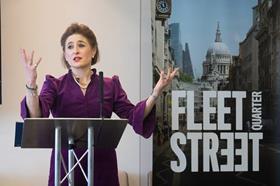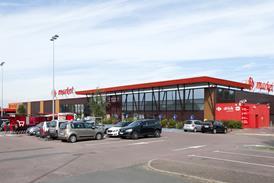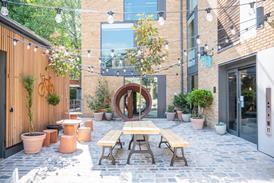A dawn of a new day is being witnessed as perceptions of city centres have dramatically shifted, triggering a need to reshape and reinvent urban centres in a post-pandemic world.

Global cities demand a curated mixed-use ecosystem that enables them to deliver vibrant and sustainable destinations in which to live, work and play. Business Improvement Districts (BIDs) have emerged as a powerful tool in leading the charge in the reinvigoration of the districts they represent, championing change and driving inward investment.
London is often imagined as a series of colourful hubs for business and play. When it comes to business, these lines are blurring and the distinct boundaries separating sectors have eroded. Disrupting London’s geographical barriers, the tech and creative industries are constantly searching for the next pioneering destination in which to place their business.
Accepting that the local offering must adapt to post-pandemic economic and social trends has been a catalyst in accelerating the reinvigoration of our cities through the creation of mixed-use areas. Employee wellbeing and sound environmental credentials are key as cities reshape the future.
As an invaluable partner between the private and public sectors, BIDs are an effective vehicle in driving transformational change. Driven by their local communities, BIDs provide a powerful voice for local businesses to collaboratively enhance their physical environments, injecting new energy to influence the repositioning of an area.
Combining commercial properties with retail, leisure and cultural offerings helps to create a dynamic destination that promotes increased dwell time, local spend and investment. Mixed-use buildings go beyond providing desks for office workers; adding multiple uses enriches local environs, responding to a wider audience that can be interacted with and used beyond traditional working hours.
The challenge now is to maximise mixed-use. To attract top-tier occupiers, office spaces require exceptional sustainability and wellbeing credentials, while retail units need experiential value to attract returning visitors. Public realm is also critical, optimising the areas around buildings with urban greening, safe streets and dynamic public spaces that draw people back to a destination.
In the next five years, curating a vibrant mixed-use destination is a clear objective for the Fleet Street Quarter BID. By 2028, a GDV of £5bn will be seen driven by a coalition of the willing, led by private developers and public investors. Across the area, 34 developments will create 3m sq ft of new grade-A commercial space that will bring 25,000 new workers into the area.
An area ripe for reinvention and well positioned between the gateway to the City’s financial district and the West End, the Fleet Street Quarter will transform into a leading mixed-use destination and an exemplar of how cities can evolve.
Office space remains at the core of the city centre’s offering, but with an element of remote working here to stay, workplaces and their surrounding streets need to be reimagined as places people will want to visit. Occupiers want to see grade-A, BREEAM ‘Outstanding’ or ‘Excellent’ buildings offering flexible space with fantastic, experiential ground-floor use and enhanced open green space in this new age for construction and placemaking.
Throughout the Fleet Street Quarter development pipeline, developers are addressing these needs. The Office Group’s Chancery House provides outstanding amenities with a lounge, gym and terrace alongside flexible workspaces and bespoke meeting rooms. These features help craft a collaborative workplace where employees want to spend time.
Retail is a critical element of mixed-use developments and increasingly means more than shoehorning in a ground-floor café. Innovative ways of introducing retail maximises each floor and adds significant value. Rooftop terraces with bars or restaurants and open ground-floor courtyards add an experiential and human touch to retail in commercial property.
Combining cutting-edge office space with experience-led retail creates layers to the buzz of a destination. Courtyard cafés serve workers while bars, pubs and restaurants entice visitors and foster a night-time economy. Ultimately, this mixed-use vision is what lies behind the extraordinary investment being funnelled into the Fleet Street Quarter. The remarkable renaissance of this area will diversify the area’s occupier base and enliven Fleet Street’s creative heritage with a new era of tech, creatives and media – driving inward investment and proving an example of how to reinvigorate city centres.
Lady Lucy French OBE is chief executive of Fleet Street Quarter BID































No comments yet